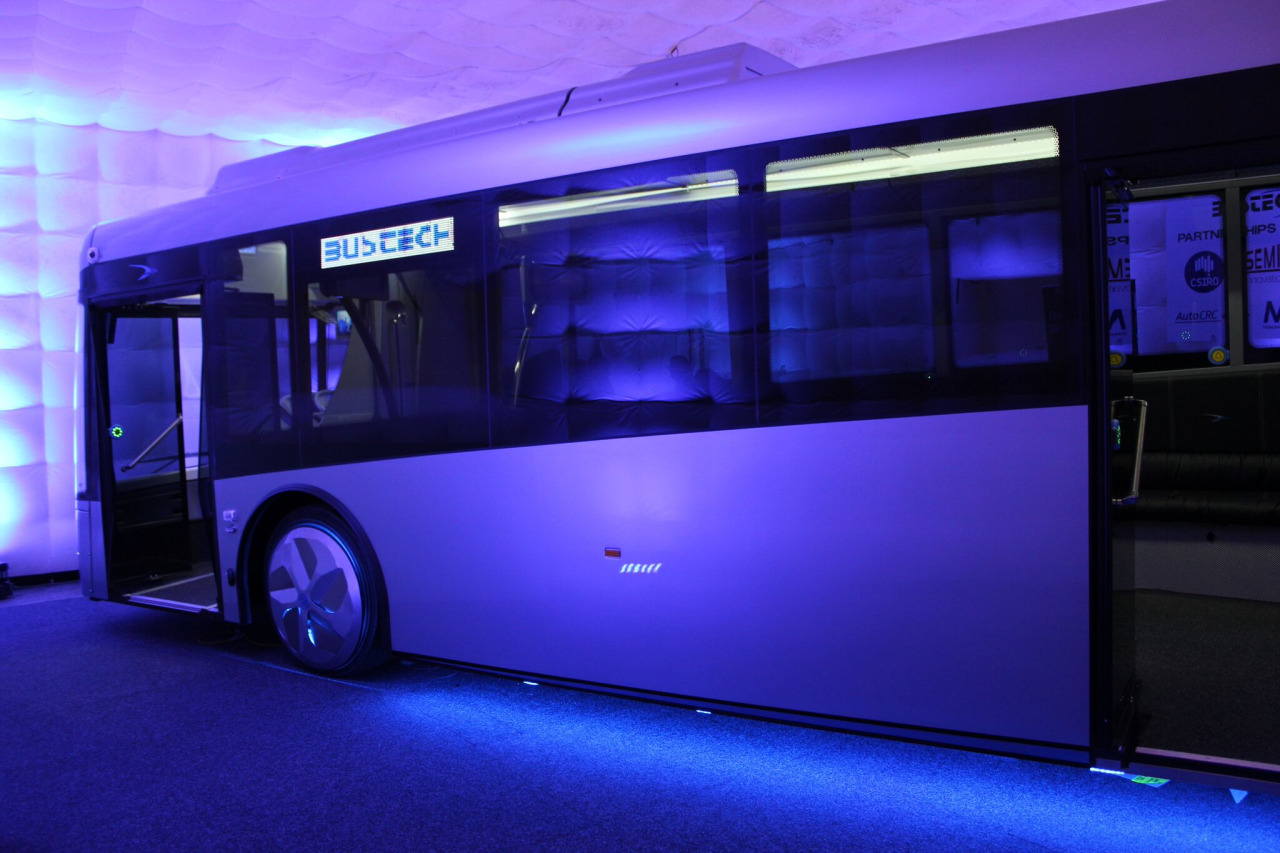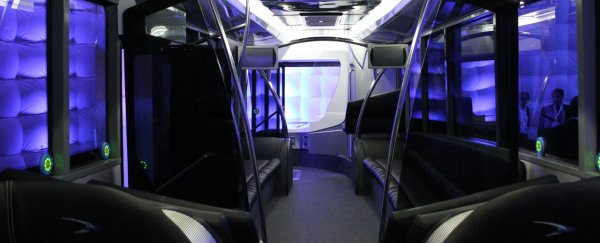The first full battery electric bus to be designed, engineered, and manufactured in Australia has just been unveiled, and it looks surprisingly slick.
Created with the help of researchers at Swinburne University of Technology in Melbourne, the bus is controlled by touch screens, can carry more than 50 passengers, and features leather-look seats that come with their own USB-charging dock. Um, yes please!
But aesthetics aside, the zero-emission bus could also be a big winner for the environment if charged using renewable energy sources, such as solar- or wind-generated electricity.
The world has been slow to master the challenge of large electric vehicles over the past decade, due to the size, weight, and cost of the battery required to run them. But we're starting to see a turnaround, with the UK also announcing their first fully electric double-decker bus earlier this week.
What's unique about the Australian eBus is that it's been designed to be future proof, by allowing batteries to be retrofitted into the system as cheaper and lighter technology comes on the market.
"This was a key aspect to achieving product life-cycle cost savings," Ajay Kapoor, Swinburne's Dean of Engineering, told the press. "On average, the electric bus will be 80 percent cheaper to maintain than the diesel buses currently being driven in Australia."
 Swinburne University of Technology
Swinburne University of Technology
As with many of the new vehicles launching onto the market, the eBus concept has an integrated touch-pad dash system built into the design to enable modularaised updates for the driver interface. This will be able to be configured to carefully control how much electricity is being used. "We developed high and low voltage electrical systems for the bus, including the design architecture for electrical circuit, motor controls, supervisory control and other systems to ensure the most efficient operation for the electric bus," said Kapoor.
The eBus, which is a collaboration between Swinburne, transit company Bustech, cooperative research centre AutoCRC, and the Malaysian Automotive Institute, will be trialed on routes in the Gold Coast in the coming months before going into mass production.
For now, the prototype, which has a range of 200 km, will be charged back at the depot in between trips. But the developers anticipate that in the future, charging will be done by opportunistic charge stations installed around cities to facilitate a highly efficient electric public transport system.
Although the Malaysian government has already signed a AUD$170 million deal with BusTech to purchase the electric buses once they're ready, there's no word yet on whether Australia will follow suit and buy into the technology.
Find out more about the technology of the future being developed at Swinburne.
